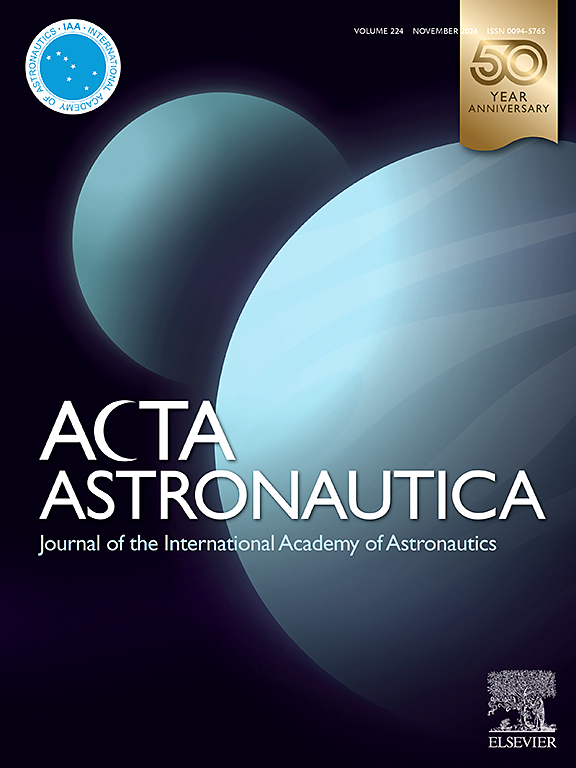Study on mixing and combustion performance of a kerosene-fueled dual-cavity configuration scramjet engine
IF 3.1
2区 物理与天体物理
Q1 ENGINEERING, AEROSPACE
引用次数: 0
Abstract
On the basis of a wedge-type scramjet engine model, this paper employs experimental and numerical simulation methods to investigate the effects of different injection conditions of liquid kerosene fuel on the combustion characteristics of a scramjet combustor at a Mach number of 8. The findings indicate a distinct separation zone in the cavity of the wedge, where the fuel residence time is longer compared with that in the main flow path. This increased residence time enhances fuel mixing and combustion stability. Between equivalence ratios of 0.24 and 0.64, the combustion reaction intensifies significantly, particularly in the range from 0.24 to 0.54. This intensification coincides with a notable expansion of the reflux zone and a wider subsonic velocity range. With increasing equivalence ratio, the periodicity of wave system oscillations in the combustor also increases, along with the pressure in the concave chamber. Pronounced oscillations in the flow field are observed at equivalence ratios of 0.4 and 0.54, with an oscillation period 5.4 times longer than at a ratio of 0.24. At an equivalence ratio of 0.64, the backpressure causes disturbances in the isolation section, affecting inlet initiation. Additionally, a higher equivalence ratio results in greater total pressure loss. The total pressure loss is highest at an equivalence ratio of 0.64, reaching 82 % of the total inlet pressure, and lowest (76 %) at a ratio of 0.24. The thrust is also correlated with the equivalence ratio, increasing by 22.5 % and 37.5 % at equivalence ratios of 0.34 and 0.4, respectively, compared with a ratio of 0.24. The maximum thrust gain is achieved at an equivalence ratio of 0.5, a 56 % increase over that at a ratio of 0.24 condition. However, at an equivalence ratio of 0.64, there is a notable decline in engine thrust due to significant disruption of the flow field structure within the combustor.
求助全文
约1分钟内获得全文
求助全文
来源期刊

Acta Astronautica
工程技术-工程:宇航
CiteScore
7.20
自引率
22.90%
发文量
599
审稿时长
53 days
期刊介绍:
Acta Astronautica is sponsored by the International Academy of Astronautics. Content is based on original contributions in all fields of basic, engineering, life and social space sciences and of space technology related to:
The peaceful scientific exploration of space,
Its exploitation for human welfare and progress,
Conception, design, development and operation of space-borne and Earth-based systems,
In addition to regular issues, the journal publishes selected proceedings of the annual International Astronautical Congress (IAC), transactions of the IAA and special issues on topics of current interest, such as microgravity, space station technology, geostationary orbits, and space economics. Other subject areas include satellite technology, space transportation and communications, space energy, power and propulsion, astrodynamics, extraterrestrial intelligence and Earth observations.
 求助内容:
求助内容: 应助结果提醒方式:
应助结果提醒方式:


